Precise multiplexed quantification of proteins in organic samples will be achieved by focused proteomics utilizing a number of or parallel response monitoring (MRM/PRM). Combined with inside requirements, the methodology achieves excellent repeatability and reproducibility enabling wonderful protein quantification and permitting longitudinal and cohort research. A laborious a part of performing such experiments lies in the preparation steps devoted to the growth and validation of particular person protein assays. Several public repositories host info on focused proteomics assays, together with NCI’s Clinical Proteomic Tumor
Analysis Consortium assay portals, PeptideAtlas SRM Experiment Library, SRMAtlas, PanoramaWeb, and PeptideTracker, with all providing various ranges of particulars. We launched MRMAssayDB in 2018 as an built-in useful resource for focused proteomics assays. The Web-based software maps and hyperlinks the assays from the repositories, consists of complete up-to-date protein and sequence annotations, and offers a number of visualization choices on the peptide and protein degree. We have prolonged MRMAssayDB with extra assays and intensive annotations.
Currently it comprises >828 000 assays overlaying >51 000 proteins from 94 organisms, of which >17 000 proteins are current in >2400 organic pathways, and >48 000 mapping to >21 000 Gene Ontology phrases. This is a rise of about 4 occasions the variety of assays since introduction. We have expanded annotations of interplay, organic pathways, and illness associations. A newly added visualization module for coupled molecular structural annotation shopping permits the consumer to interactively study peptide sequence and any identified PTMs and illness mutations, and map all to obtainable protein 3D constructions.
Because of its integrative strategy, MRMAssayDB permits a holistic view of appropriate proteotypic peptides and generally used transitions in empirical knowledge. The expression and prognostic worth of TBK1 was analyzed by Tumor Immune Estimation Resource (TIMER), Kaplan-Meier plotter and Gene Expression Profiling Interactive Analysis (GEPIA), Clinical Proteomic Tumor Analysis Consortium (CPTAC) and additional confirmed in the current cohort of sufferers with HCC. The affiliation between TBK1 and HCC immune infiltrates, and its potential mechanism have been investigated through analyses of the Tumor Immune Estimation Resource, tumor-immune system interactions database (TISIDB), CIBERSORT, STRING, and Metascape.
RawBeans: A Simple, Vendor-Independent, Raw-Data Quality-Control Tool
Every laboratory performing mass-spectrometry-based proteomics strives to generate high-quality knowledge. Among the many elements that impression the final result of any experiment in proteomics is the LC-MS system efficiency, which ought to be monitored inside every particular experiment and likewise long run. This course of is termed high quality management (QC). We current an easy-to-use device that quickly produces a visible, HTML-based report that features the key parameters wanted to observe the LC-MS system efficiency, with a spotlight on monitoring the efficiency inside an experiment.
The device, named RawBeans, generates a report for particular person information or for a set of samples from a complete experiment. We anticipate that it’ll assist proteomics customers and specialists consider uncooked knowledge high quality unbiased of knowledge processing. The mass-spectrometry proteomics knowledge have been deposited to the ProteomeXchange Consortium through the PRIDE companion repository with the knowledge set identifier PXD022816. The impact of TBK1 on immune infiltrates and the therapeutic worth of concentrating on TBK1 have been additional investigated in a HCC mouse mannequin by therapy with a TBK1 antagonist.
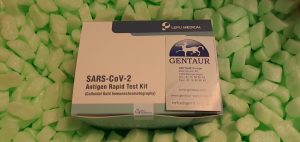
In Stallion Spermatozoa, Superoxide Dismutase (Cu-Zn) (SOD1) and the Aldo-Keto-Reductase Family 1 Member b (AKR1B1) Are the Proteins Most Significantly Reduced by Cryopreservation
Although cryopreservation is extensively used in animal breeding, the approach continues to be suboptimal. The inhabitants of spermatozoa surviving the process experiences modifications attributed to alteration in their redox regulation. In order to increase our information relating to this specific side, the proteome in recent and frozen thawed aliquots of equine spermatozoa was studied to establish the proteins most severely affected by the process. If alteration of redox regulation is a significant component explaining cryodamage, proteins collaborating in redox regulation ought to be principally affected.
Using a break up pattern design, 30 ejaculates from 10 totally different stallions have been analyzed as recent spermatozoa, and one other aliquot from the similar ejaculate was analyzed as a frozen thawed pattern. The proteome was studied below each situations utilizing UHPLC-MS/MS and bioinformatic evaluation performed to establish discriminant variables between each situations. Data can be found by means of the ProteomeXchange Consortium with identifier PXD022236. The proteins most importantly lowered have been Aldo-keto reductase household 1 member B (p = 2.2 × 10-17) and Superoxide dismutase (Cu-Zn) (p = 4.7 × 10-14).
This is the first time that SOD1 has been recognized as a discriminating variable utilizing bioinformatic evaluation, the place it was considered one of the most extremely considerably totally different proteins seen between recent and frozen thawed semen. This discovering strongly helps the concept that alteration in redox regulation and oxidative stress is a significant component concerned in cryodamage and means that management of redox regulation ought to be a significant goal to enhance present cryopreservation procedures.
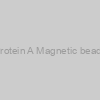 Protein A Magnetic beads |
|
EA-IP-015M |
Elabscience Biotech |
1mL |
EUR 105 |
|
|
|
Description: Primary Antibodies |
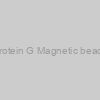 Protein G Magnetic beads |
|
EA-IP-016M |
Elabscience Biotech |
1mL |
EUR 105 |
|
|
|
Description: Primary Antibodies |
 Protein L Magnetic beads |
|
EA-IP-017M |
Elabscience Biotech |
1mL |
EUR 105 |
|
|
|
Description: Primary Antibodies |
) Magnetic Beads (RNA) |
|
AG0104 |
AcceGen |
5 ml, 60 ml |
Ask for price |
|
Description: The Magnetic Beads (RNA)</strong> are automated for highly efficient RNA purification by specific adsorption. |
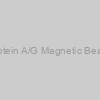 Protein A/G Magnetic Beads |
|
6527-1 |
Biovision |
each |
EUR 352.8 |
 Protein A/G Magnetic Beads |
|
EA-IP-007M |
Elabscience Biotech |
1mL |
EUR 80 |
|
|
|
Description: Primary Antibodies |
) 96 Magnetic Stand
(For Magnetic Beads DNA/RNA Extraction/Magnetic Beads DNA/RNA Extraction) |
|
MNS096-W |
Geneaid Biotech |
each |
EUR 70 |
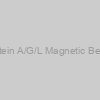 Protein A/G/L Magnetic Beads |
|
6547-1 |
Biovision |
each |
EUR 405.6 |
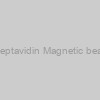 Streptavidin Magnetic beads |
|
EA-IP-011M |
Elabscience Biotech |
1mL |
EUR 241 |
|
|
|
Description: Primary Antibodies |
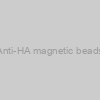 Anti-HA magnetic beads |
|
B26201 |
Bimake |
1 mL |
EUR 579.6 |
|
Description: Anti-HA magnetic beads kit is based on hydroxyl magnetic beads covalently coupling with high quality mouse IgG2b monoclonal antibody, used for co-immunoprecipitation and protein purification. |
 Anti-HA magnetic beads |
|
B26202 |
Bimake |
5 mL |
EUR 1742.4 |
|
Description: Anti-HA magnetic beads kit is based on hydroxyl magnetic beads covalently coupling with high quality mouse IgG2b monoclonal antibody, used for co-immunoprecipitation and protein purification. |
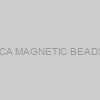 SILICA MAGNETIC BEADS 1L |
|
L5011001 |
Biochain |
1 liter |
EUR 7260 |
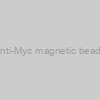 Anti-Myc magnetic beads |
|
B26301 |
Bimake |
1 mL |
EUR 579.6 |
|
Description: Anti-Myc magnetic beads kit is based on hydroxyl magnetic beads covalently coupling with mouse IgG1 monoclonal antibody.it is recommended to use for co-immunoprecipitation and protein purification. |
 Anti-Myc magnetic beads |
|
B26302 |
Bimake |
5 mL |
EUR 1742.4 |
|
Description: Anti-Myc magnetic beads kit is based on hydroxyl magnetic beads covalently coupling with mouse IgG1 monoclonal antibody.it is recommended to use for co-immunoprecipitation and protein purification. |
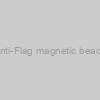 Anti-Flag magnetic beads |
|
B26101 |
Bimake |
1 mL |
EUR 579.6 |
|
Description: Anti-Flag magnetic beads is based on hydroxyl magnetic beads covalently coupling with mouse IgG1 monoclonal antibody. It is recommended to use for co-immunoprecipitation and protein purification. |
 Anti-Flag magnetic beads |
|
B26102 |
Bimake |
5 mL |
EUR 1742.4 |
|
Description: Anti-Flag magnetic beads is based on hydroxyl magnetic beads covalently coupling with mouse IgG1 monoclonal antibody. It is recommended to use for co-immunoprecipitation and protein purification. |
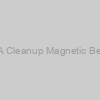 DNA Cleanup Magnetic Beads |
|
AG0311L |
AcceGen |
5 ml, 60 ml |
Ask for price |
|
Description: DNA Cleanup Magnetic Beads are superparamagnetic, non-aggregating iron oxide particles (or ‘microspheres’) which can bind DNA ant high capcity. The highly efficient DNA purification magnetic beads are based clean-up system for the purification of DNA for NGS workflows. Superior yield, purity, and quality over the leading competitors, all at a better value, because we design and manufacture them in-house. DNA Cleanup Magnetic Beads enables faster binding kinetics, with high sensitivity & selectivity, in both manual and automated biomedical and research applications. The purified DNA is of high yield and integrity and is free of inhibitors, ready for use in a number of downstream applications including PCR, qPCR, mutation screening, microarray analysis, sequencing, single nucleotide polymorphism (SNP) and short-tandem repeat (STR) genotyping. |
 SILICA MAGNETIC BEADS 10ML |
|
L5011010 |
Biochain |
10 ml |
EUR 73 |
) BlackPearl® (Magnetic Beads) |
|
20161006-1 |
Bio-WORLD |
- |
Ask for price |
) BlackPearl® (Magnetic Beads) |
|
20161006-2 |
Bio-WORLD |
- |
Ask for price |
) BlackPearl® (Magnetic Beads) |
|
20161006-3 |
Bio-WORLD |
- |
Ask for price |
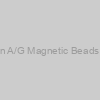 Protein A/G Magnetic Beads for IP |
|
B23201 |
Bimake |
1 ml |
EUR 158.4 |
|
Description: Protein A/G Magnetic Beads for immunoprecipitation (IP) are based on a biological nanosurface technology (S-TEC). Protein A/G coats the surface of super paramagnetic microspheres with high coating density up to 9.3 × 10^13 molecules/cm2. Compared to similar immune magnetic beads, our Protein A/G beads display much more antibody binding sites therefore using less magnetic beads per reaction and ultimately achiving greater cost-efficiency. Non-specific binding is reduced to an absolute low eliminating any detectable interference with your IP assays. The large, specific surface area of the beads greatly shortens the adsorption time and achieves complete antibody/antigen adsorption process in 10 minutes and complete total purification and precipitation in just 30 minutes. This product can be used on a wide variety of samples, such as in cell lysates, supernatants collected from cell secretion, serum, ascites, and other immune antigens. |
 Protein A/G Magnetic Beads for IP |
|
B23202 |
Bimake |
5 ml |
EUR 558 |
|
Description: Protein A/G Magnetic Beads for immunoprecipitation (IP) are based on a biological nanosurface technology (S-TEC). Protein A/G coats the surface of super paramagnetic microspheres with high coating density up to 9.3 × 10^13 molecules/cm2. Compared to similar immune magnetic beads, our Protein A/G beads display much more antibody binding sites therefore using less magnetic beads per reaction and ultimately achiving greater cost-efficiency. Non-specific binding is reduced to an absolute low eliminating any detectable interference with your IP assays. The large, specific surface area of the beads greatly shortens the adsorption time and achieves complete antibody/antigen adsorption process in 10 minutes and complete total purification and precipitation in just 30 minutes. This product can be used on a wide variety of samples, such as in cell lysates, supernatants collected from cell secretion, serum, ascites, and other immune antigens. |
 30 mL) Magnetic Beads (DNA) 30 mL |
|
P920-30 |
101Bio |
30 mL |
EUR 399 |
 450 mL) Magnetic Beads (DNA) 450 mL |
|
P920-450 |
101Bio |
450 mL |
EUR 3999 |
 5 mL) Magnetic Beads (DNA) 5 mL |
|
P920-5 |
101Bio |
5 mL |
EUR 99 |
 60 mL) Magnetic Beads (DNA) 60 mL |
|
P920-60 |
101Bio |
60 mL |
EUR 699 |
) Protein A BlackPearl® (Magnetic Beads) |
|
20161000-1 |
Bio-WORLD |
- |
Ask for price |
) Protein A BlackPearl® (Magnetic Beads) |
|
20161000-2 |
Bio-WORLD |
- |
Ask for price |
) Protein A BlackPearl® (Magnetic Beads) |
|
20161000-3 |
Bio-WORLD |
- |
Ask for price |
) Protein G BlackPearl® (Magnetic Beads) |
|
20161003-1 |
Bio-WORLD |
- |
Ask for price |
) Protein G BlackPearl® (Magnetic Beads) |
|
20161003-2 |
Bio-WORLD |
- |
Ask for price |
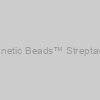 Magnetic Beads™ Streptavidin |
|
SMB-B01 |
ACROBIOSYSTEMS |
5mg |
EUR 149.8 |
|
|
|
Description: The Streptavidin-Magnetic Beads are 2.8 µm superparamagnetic particles covalently coupled to a highly pure form of streptavidin (SA). The beads can be used to capture the biotinylated proteins or other molecules, because Streptavidin (SA) has an extraordinarily high affinity for biotin with a dissociation constant (Kd) on the order of 10−14 mol/L, the Biotinylated molecules can bind to the SA irreversibly.Streptavidin is a tetrameric protein purified from the bacterium Streptomyces avidin, and exhibits high binding affinity for biotin. Able to bind one molecule of biotin with each subunit. Streptavidin (PI=6.0-7.5) has lower level of non-specific binding to various biological components at physiological pH than avidin (PI=7.4), resulting from its isoelectric point (PI).The Streptavidin-Magnetic Beads is easy to capture the biotinylated proteins or other molecules in Chemiluminescence procedures, and the bounded protein have no activity lost, this ready to use products could greatly save your protein coupling time and hassle, and help us get the best performance and highly reproducible results. |
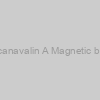 Concanavalin A Magnetic beads |
|
EA-IP-014M |
Elabscience Biotech |
1mL |
EUR 159 |
|
|
|
Description: Primary Antibodies |
) IP/CoIP Kit (Magnetic Beads) |
|
EA-IP-K007M |
Elabscience Biotech |
50T |
EUR 700 |
|
|
|
Description: Antibody Application Reagents |
 Magnetic Beads) Anti-HA (Nanobody) Magnetic Beads |
|
AE109 |
Abclonal |
500μL |
EUR 403 |
|
|
 Magnetic Beads) Anti-GFP (Nanobody) Magnetic Beads |
|
AE079 |
Abclonal |
500μL |
EUR 312 |
|
|
 Magnetic Beads) Anti-Myc (Nanobody) Magnetic Beads |
|
AE107 |
Abclonal |
1000μL |
EUR 213.2 |
|
|
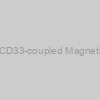 Human CD33-coupled Magnetic Beads |
|
MBC-K008 |
ACROBIOSYSTEMS |
2mg |
EUR 2707.1 |
|
|
|
Description: Human CD33 protein is expressed from human 293 cells (HEK293). It contains AA Asp 18 - His 259(Accession # P20138-1(R69G)). |
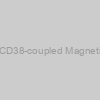 Human CD38-coupled Magnetic Beads |
|
MBC-K010 |
ACROBIOSYSTEMS |
2mg |
EUR 2707.1 |
|
|
|
Description: Human CD38 protein is expressed from human 293 cells (HEK293). It contains AA Val 43 - Ile 300(Accession # P28907-1). |
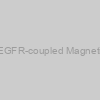 Human EGFR-coupled Magnetic Beads |
|
MBE-K012 |
ACROBIOSYSTEMS |
2mg |
EUR 2707.1 |
|
|
|
Description: Human EGFR protein is expressed from human 293 cells (HEK293). It contains AA Leu 25 - Ser 645(Accession # P00533-1). |
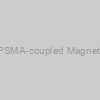 Human PSMA-coupled Magnetic Beads |
|
MBP-K007 |
ACROBIOSYSTEMS |
2mg |
EUR 3349.1 |
|
|
|
Description: Human PSMA protein is expressed from human 293 cells (HEK293). It contains AA Lys 44 - Ala 750(Accession # Q04609-1). |
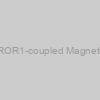 Human ROR1-coupled Magnetic Beads |
|
MBR-K009 |
ACROBIOSYSTEMS |
2mg |
EUR 2707.1 |
|
|
|
Description: Human ROR1 protein is expressed from human 293 cells (HEK293). It contains AA Gln 30 - Glu 403(Accession # Q01973-1). |
 Human BCMA-coupled Magnetic Beads |
|
MBS-K004 |
ACROBIOSYSTEMS |
2mg |
EUR 2707.1 |
|
|
|
Description: Human BCMA protein is expressed from human 293 cells (HEK293). It contains AA Met 1 - Ala 54(Accession # Q02223-1). |
 Human CD19-coupled Magnetic Beads |
|
MBS-K005 |
ACROBIOSYSTEMS |
2mg |
EUR 4312.1 |
|
|
|
Description: Human CD19 protein is expressed from human 293 cells (HEK293). It contains AA Pro 20 - Lys 291(Accession # P15391-1). |
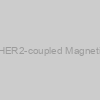 Human HER2-coupled Magnetic Beads |
|
MBS-K006 |
ACROBIOSYSTEMS |
500ug |
EUR 2835.5 |
|
|
|
Description: Human HER2 protein is expressed from human 293 cells (HEK293). It contains AA Thr 23 - Thr 652(Accession # P04626-1). |
 Human ACE2-coupled Magnetic Beads |
|
MBS-K013 |
ACROBIOSYSTEMS |
2mg |
EUR 2707.1 |
|
|
|
Description: Human ACE2 protein is expressed from human 293 cells (HEK293). It contains AA Gln 18 - Ser 740(Accession # Q9BYF1-1). |
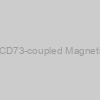 Human CD73-coupled Magnetic Beads |
|
MBS-K022 |
ACROBIOSYSTEMS |
2mg |
EUR 3349.1 |
|
|
|
Description: Human CD73 Protein is expressed from human 293 cells (HEK293). It contains AA Trp 27 - Ser 549(Accession # P21589-1). |
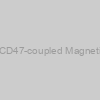 Human CD47-coupled Magnetic Beads |
|
MBS-K023 |
ACROBIOSYSTEMS |
2mg |
EUR 2707.1 |
|
|
|
Description: Human CD47 Protein is expressed from human 293 cells (HEK293). It contains AA Gln 19 - Pro 139(Accession # Q08722). |
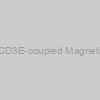 Human CD3E-coupled Magnetic Beads |
|
MBS-K026 |
ACROBIOSYSTEMS |
2mg |
EUR 2707.1 |
|
|
|
Description: Human CD3E Protein is expressed from human 293 cells (HEK293). It contains AA Asp 23 - Asp 126(Accession # P07766-1). |
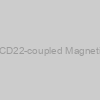 Human CD22-coupled Magnetic Beads |
|
MBS-K052 |
ACROBIOSYSTEMS |
2mg |
EUR 4312.1 |
|
|
|
Description: Human CD22 Protein is expressed from human 293 cells (HEK293). It contains AA Asp 20 - Arg 687(Accession # P20273-1). |
 Human DLL3-coupled Magnetic Beads |
|
MBS-K053 |
ACROBIOSYSTEMS |
2mg |
EUR 2707.1 |
|
|
|
Description: Delta-like protein 3 (DLL3) is a transmembrane protein that belongs to the Delta/Serrate/Lag-2 (DSL) family of Notch ligands.May be required to divert neurons along a specific differentiation pathway. Plays a role in the formation of somite boundaries during segmentation of the paraxial mesoderm. DLL3 protein is expressed on the surface of tumor cells but not in normal adult tissues. |
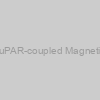 Human uPAR-coupled Magnetic Beads |
|
MBS-K076 |
ACROBIOSYSTEMS |
2mg |
EUR 2707.1 |
|
|
|
Description: Tumors are the result of uncontrolled proliferation of cells in different organs. Tumor development is a multistage process, that includes the generation of primary tumors, separation of tumors from primary sites, degradation of extracellular matrix (ECM), and distant metastasis of tumors. A variety of genes play important roles in the development of tumors, including the cell surface receptor urokinase-type plasminogen activator receptor (uPAR). uPAR is highly expressed in a variety of tumor cells, and a variety of signals regulated by uPAR play significant roles in tumor cell proliferation and metastasis, tumor-related glycolysis, the tumor microenvironment and angiogenesis. Studies have found that some specific drugs and antibodies have unique inhibitory effects on uPAR. |
 Magnetic Beads for DNA Purification |
|
M1502-5 |
Biovision |
5 ml |
EUR 332.4 |
) DDDDK-Tag Antibody (Magnetic Beads) |
|
abx005594-100l |
Abbexa |
100 µl |
EUR 250 |
) Amylose BlackPearl® (Magnetic Beads) |
|
20161009-1 |
Bio-WORLD |
- |
Ask for price |
) Amylose BlackPearl® (Magnetic Beads) |
|
20161009-2 |
Bio-WORLD |
- |
Ask for price |
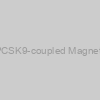 Human PCSK9-coupled Magnetic Beads |
|
MBS-K054 |
ACROBIOSYSTEMS |
2mg |
EUR 2707.1 |
|
|
|
Description: Proprotein convertase subtilisin/kexin type 9 (PCSK9) is also known as NARC1 (neural apoptosis regulated convertase), is a newly identified subtilase belonging to the peptidase S8 subfamily. Mouse PCSK9 is synthesized as a soluble zymogen, and undergoes autocatalytic intramolecular processing in the endoplasmic reticulum, resulting in the cleavage of its propeptide that remains associated with the secreted active enzyme with a broad alkaline pH optimum. This protein plays a major regulatory role in cholesterol homeostasis. PCSK9 binds to the epidermal growth factor-like repeat A (EGF-A) domain of the low-density lipoprotein receptor (LDLR), inducing LDLR degradation. PCSK9 may also have a role in the differentiation of cortical neurons. Mutations in this gene have been associated with a rare form of autosomal dominant familial hypercholesterolemia (HCHOLA3). |
 Human ASGR1-coupled Magnetic Beads |
|
MBS-K055 |
ACROBIOSYSTEMS |
2mg |
EUR 2707.1 |
|
|
|
Description: ASGPR, a transmembrane C-type lectin, recognizes a wide variety of ligands that contain either terminal galactose (Gal) or N-acetylgalactosamine (GalNAc) residues and has been identified as a highly selective receptor on hepatocytes. The ASGR is composed of both a major (ASGR1) and minor subunit (ASGR2). ASGR1 has been shown to be efficiently targeted to the plasma membrane and to undergo constitutive endocytosis and recycling and found mainly expressed in the human liver. |
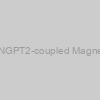 Human ANGPT2-coupled Magnetic Beads |
|
MBS-K035 |
ACROBIOSYSTEMS |
2mg |
EUR 2707.1 |
|
|
|
Description: Human ANGPT2 Protein is expressed from human 293 cells (HEK293). It contains AA Lys 275 - Phe 496(Accession # O15123-1). |
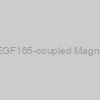 Human VEGF165-coupled Magnetic Beads |
|
MBS-K036 |
ACROBIOSYSTEMS |
2mg |
EUR 2707.1 |
|
|
|
Description: Human VEGF165 Protein is expressed from human 293 cells (HEK293). It contains AA Ala 27 - Arg 191(Accession # P15692-4). |
 Ni-NTA Magnetic Agarose Beads |
|
20-512M1 |
Genesee Scientific |
2ml/Unit |
EUR 116.39 |
|
Description: Suspension, 5% Magnetic Resin |
 Ni-NTA Magnetic Agarose Beads |
|
20-512M2 |
Genesee Scientific |
5ml/Unit |
EUR 263.6 |
|
Description: Suspension, 5% Magnetic Resin |
 Ni-NTA Magnetic Agarose Beads |
|
20-512M3 |
Genesee Scientific |
10ml/Unit |
EUR 477.13 |
|
Description: Suspension, 5% Magnetic Resin |
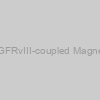 Human EGFRvIII-coupled Magnetic Beads |
|
MBS-K020 |
ACROBIOSYSTEMS |
2mg |
EUR 2707.1 |
|
|
|
Description: Human EGFRvIII Protein is expressed from human 293 cells (HEK293). It contains AA Leu 25- Ser 378(Accession # NP_001333870.1). |
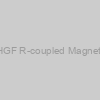 Human HGF R-coupled Magnetic Beads |
|
MBS-K021 |
ACROBIOSYSTEMS |
2mg |
EUR 2707.1 |
|
|
|
Description: Human HGF R Protein is expressed from human 293 cells (HEK293). It contains AA Glu 25 - Thr 932(Accession # P08581). |
) Streptavidin BlackPearl® (Magnetic Beads) |
|
20161004-1 |
Bio-WORLD |
- |
Ask for price |
) Streptavidin BlackPearl® (Magnetic Beads) |
|
20161004-2 |
Bio-WORLD |
- |
Ask for price |
 Human Mesothelin-coupled Magnetic Beads |
|
MBS-K024 |
ACROBIOSYSTEMS |
2mg |
EUR 2707.1 |
|
|
|
Description: Human Mesothelin Protein is expressed from human 293 cells (HEK293). It contains AA Glu 296 - Gly 580(Accession # Q13421-3(R309P)). |
 Magnetic Beads for DNA size selection |
|
AG0103 |
AcceGen |
5 ml, 60 ml |
Ask for price |
|
Description: The Magnetic Beads are ideal for DNA purification, concentration and size selection, along with next-generation sequencing library preparation kits. |
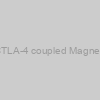 Human CTLA-4 coupled Magnetic Beads |
|
MBS-K042 |
ACROBIOSYSTEMS |
2mg |
EUR 2707.1 |
|
|
|
Description: Human CTLA-4 Protein is expressed from human 293 cells (HEK293). It contains AA Ala 37 - Phe 162(Accession # Q6GR94-1). |
 BlackPearl® (Magnetic Beads)) Nickel (Ni2+) BlackPearl® (Magnetic Beads) |
|
20161010-1 |
Bio-WORLD |
- |
Ask for price |
 BlackPearl® (Magnetic Beads)) Nickel (Ni2+) BlackPearl® (Magnetic Beads) |
|
20161010-2 |
Bio-WORLD |
- |
Ask for price |
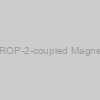 Human TROP-2-coupled Magnetic Beads |
|
MBS-K028 |
ACROBIOSYSTEMS |
2mg |
EUR 2707.1 |
|
|
|
Description: Human TROP-2 Protein is expressed from human 293 cells (HEK293). It contains AA Gln 31 - Thr 274(Accession # P09758-1). |
) Magnetic Beads DNA Extraction Kit (Blood) |
|
MB048 |
Geneaid Biotech |
each |
EUR 40 |
) Magnetic Beads DNA Extraction Kit (Blood) |
|
MB096 |
Geneaid Biotech |
each |
EUR 75 |
) Magnetic Beads DNA Extraction Kit (Plant) |
|
MP048 |
Geneaid Biotech |
each |
EUR 55 |
) Magnetic Beads DNA Extraction Kit (Plant) |
|
MP096 |
Geneaid Biotech |
each |
EUR 99 |
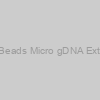 Magnetic Beads Micro gDNA Extraction Kit |
|
MM096 |
Geneaid Biotech |
each |
EUR 113 |
 Magnetic Beads Ab) Anti-mCherry (Nanobody) Magnetic Beads Ab |
|
AE094 |
Abclonal |
1000μL |
EUR 213.2 |
|
|
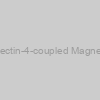 Human Nectin-4-coupled Magnetic Beads |
|
MBS-K039 |
ACROBIOSYSTEMS |
2mg |
EUR 2707.1 |
|
|
|
Description: Human Nectin-4 Protein is expressed from human 293 cells (HEK293). It contains AA Gly 32 - Ser 349(Accession # Q96NY8-1). |
) Magnetic Beads DNA Extraction Kit (Bacteria) |
|
ME004 |
Geneaid Biotech |
each |
EUR 3 |
) Magnetic Beads DNA Extraction Kit (Bacteria) |
|
ME048 |
Geneaid Biotech |
each |
EUR 60 |
) Magnetic Beads DNA Extraction Kit (Bacteria) |
|
ME096 |
Geneaid Biotech |
each |
EUR 110 |
 BlackPearl® (Magnetic Beads)) Calmodulin (CAM) BlackPearl® (Magnetic Beads) |
|
20161002-1 |
Bio-WORLD |
- |
Ask for price |
 BlackPearl® (Magnetic Beads)) Calmodulin (CAM) BlackPearl® (Magnetic Beads) |
|
20161002-2 |
Bio-WORLD |
- |
Ask for price |
 BlackPearl® (Magnetic Beads)) Calmodulin (CAM) BlackPearl® (Magnetic Beads) |
|
20161002-3 |
Bio-WORLD |
- |
Ask for price |
-coupled Magnetic Beads) Human B7-H3(4Ig)-coupled Magnetic Beads |
|
MBS-K040 |
ACROBIOSYSTEMS |
2mg |
EUR 2707.1 |
|
|
|
Description: Human B7-H3 Protein is expressed from human 293 cells (HEK293). It contains AA Gly 27 - Thr 461(Accession # Q5ZPR3-1). |
 BlackPearl® (Magnetic Beads)) Glutathione (GSH) BlackPearl® (Magnetic Beads) |
|
20161007-1 |
Bio-WORLD |
- |
Ask for price |
 BlackPearl® (Magnetic Beads)) Glutathione (GSH) BlackPearl® (Magnetic Beads) |
|
20161007-2 |
Bio-WORLD |
- |
Ask for price |
 BlackPearl® (Magnetic Beads)) Glutathione (GSH) BlackPearl® (Magnetic Beads) |
|
20161007-3 |
Bio-WORLD |
- |
Ask for price |
) Protein A-coupled Magnetic Beads (recommended for MPCLIA) |
|
MPC-A001 |
ACROBIOSYSTEMS |
10mg |
EUR 866.7 |
|
|
|
Description: The Protein A-coupled Magnetic Beads are 2.8 µm superparamagnetic particles covalently coupled to a highly pure form of protein A. The beads can be used to capture the antibodies in Chemiluminescence procedures.The Protein A is a 42 kDa surface protein, It binds the heavy chain within the Fc region of most immunoglobulins and also within the Fab region in the case of the human VH3 family.The Anti-Protein A-coupled Magnetic Beads is easy to capture the antibodies, and the bounded antibody have no activity lost, this ready to use products could greatly save your protein coupling time and hassle, and help us get the best performance and highly reproducible results. |
) Protein G-coupled Magnetic Beads (recommended for MPCLIA) |
|
MPC-A002 |
ACROBIOSYSTEMS |
10mg |
EUR 866.7 |
|
|
|
Description: The Protein G-coupled Magnetic Beads are 2.8 µm superparamagnetic particles covalently coupled to a highly pure form of protein G. The beads can be used to capture the antibodies in Chemiluminescence procedures.The Protein G binds the heavy chain within the Fc region of most immunoglobulins but not bind dog immunoglobulins.The Protein G-coupled Magnetic Beads is easy to capture the most antibodies, and the bounded antibody have no activity lost, this ready to use products could greatly save your protein coupling time and hassle, and help us get the best performance and highly reproducible results. |
) Protein L-coupled Magnetic Beads (recommended for MPCLIA) |
|
MPC-A008 |
ACROBIOSYSTEMS |
10mg |
EUR 866.7 |
|
|
|
Description: The Protein L-coupled Magnetic Beads are 2.8 µm superparamagnetic particles covalently coupled to a highly pure form of Protein L. The beads can be used to capture the antibodies in Chemiluminescence procedures. The Protein L is a 45 kDa surface protein, and can bind almost all antibody types, including IgG, IgM, IgA, IgE and IgD. It binds to antibodies with appropriate Kappa light chains such as VkI, VkIII and VkIV, whereas no binding occurred with antibodies of the VkII or with any Lambda light chains. The Protein L-coupled Magnetic Beads is easy to capture the most antibodies, and the bounded antibody have no activity lost, this ready to use products could greatly save your protein coupling time and hassle, and help us get the best performance and highly reproducible results. |
) DNA Purification SPRI Magnetic Beads (5 ml) |
|
G950 |
ABM |
5 ml |
EUR 115 |
) DNA Purification SPRI Magnetic Beads (25 ml) |
|
G951 |
ABM |
25ml |
EUR 425 |
Different components of the mind are affected distinctively in varied phases of the Alzheimer’s illness (AD) pathogenesis. Identifying the biochemical modifications in particular mind areas is essential to understand the neuropathological mechanisms in early pre-symptomatic phases of AD. Quantitative proteomics profiling of 4 distinct areas of the mind of younger APP/PS1 mouse mannequin of AD was carried out adopted by biochemical pathway enrichment evaluation. Findings revealed basic compositional and purposeful shifts even in the early phases of the illness. This novel research highlights distinctive proteome and biochemical pathway alterations in particular areas of the mind that underlie the early phases of AD pathology and can present a framework for future longitudinal research.

